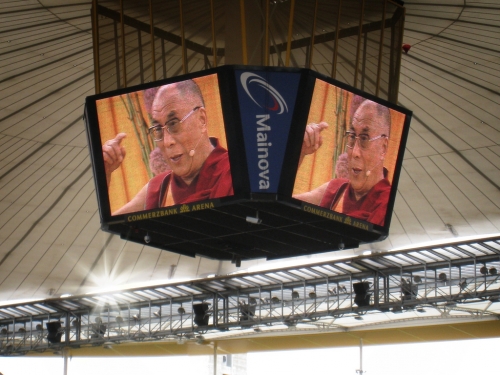
In Joachim Krueger’s most recent blog post on Psychology Today, the social psychologist attempts to expose the alleged hypocrisy of the 14th Dalai Lama and what he views as the unexamined shallowness of His Holiness’ vision. In demythologizing the Dalai Lama and his aura of “overall goodness,” Krueger asks us not only to sober up from our blind reverence but also to “consider the pull of collective valuation, the need to revere at least someone, and the fragility of the human thinking machine.”
Unfortunately, Krueger’s better impulses and most penetrating observations are undermined by his reliance on his one and only source: Dalai Lama: The Fall of a God-King by Colin Goldner, who is regarded as something of a quack by Tibetologists and Buddhist scholars. Goldner cherry picks from historical sources to embrace a superficial, old-fashioned view of Tibetan Buddhism as a demon-ridden cultish nightmare of a religion, redolent of the “Lamaism” first outlined in the 13th century and later espoused by the Victorian English. Goldner’s arguments are at best disingenuous and at worst paranoid. At one point, he stoops so low as to insinuate that the Dalai Lama had sexual relations with Indira Gandhi.
Krueger’s argument, informed solely by Goldner’s fooleries, is riddled with throwaway quibbles, most too small or convoluted to take serious issue with. He complains, for instance, that the degrees of the graduates of the universities that give honorary degrees to the Dalai Lama are cheapened because the Dalai Lama has not actually studied in those respective fields (or as he writes, “fileds”). This is unlikely, as an honorary degree is just that. Krueger also alludes to the hypocrisy of the Dalai Lama preaching ecological awareness while accumulating a massive carbon footprint by traveling vast distances to do so. Like others, this criticism misses the point.
Not all of Krueger’s critique, however, is without base. Krueger is half right when he observes that the Dalai Lama “has successfully branded himself as a modern-age (new-age) prophet of overall goodness.” Only half right because 1) this branding is largely the work of an extended network of advisers (including political advisors), publicists, and publishers and 2) the Dalai Lama has (gently) critiqued the tenets of the New Age movement on a number of occasions, so he can hardly be called a “new-age prophet.” Basically what’s left, then, is that the Dalai Lama has been successfully branded as a symbol of overall goodness. Fair enough. It’s neither the “O” brand nor the New Age movement, but like these brands, His Holiness’ public presentation has its own distinctive qualities.
French essayist Pascal Bruckner hits the mark when he observes that the Dalai Lama’s “peculiar talent is to have invented… a worldwide spiritual Esperanto that is accessible to everyone without barrier or constraints, a chameleon-like discourse that can be adapted to any audience whatever.” It is not the Dalai Lama that is misperceived in the West, despite what Goldner and Krueger might have us believe. (And if this were the case, who would be responsible?). It is the distinct version of Buddhism that the Dalai Lama presents to Western audiences in an endless itinerary of conferences, panels, interviews, teachings, and bestsellers. This spiritual Esperanto has proven far more useful than its namesake, but to what extent are we willing to accept it as the buddhadharma?
Thank you for subscribing to Tricycle! As a nonprofit, we depend on readers like you to keep Buddhist teachings and practices widely available.